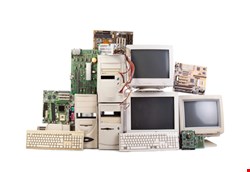
Old, outdated equipment also tends to have old, outdated software – and that means that new, updated malware can have a field day with it. Unfortunately, a new report has revealed that the percentage of aging and obsolete devices on corporate networks globally is at its highest rate in six years.
According to Dimension Data’s Network Barometer Report, more than half (51%) of all corporate network devices globally are aging or obsolete; 11% are completely obsolete.
In addition, 27% of all devices are now “later” in their product lifecycle and at the point where the vendor begins to reduce support. Interestingly, the Americas included the lowest percentage of aging and obsolete devices (44%) out of any region worldwide.
“Over the past few years, we’ve seen the proportion of aging and obsolete devices steadily increase, and the conventional assumption was that a technology refresh cycle was imminent,” said Raoul Tecala, Dimension Data’s business development director for networking, in a statement. “However, our data reveals that organizations are sweating their network assets for longer than expected.”
Tecala posits that there are three main drivers behind this trend. First, following the economic crisis, organizations are keeping a sustained focus on cost savings – particularly reduced capex budgets. Second, there is growing availability and uptake of as-a-service ICT consumption models, which reduces the need for organizations to invest in their own infrastructure.
Finally, the advent of programmable, software-defined networks (SDNs) may be causing organizations to ‘wait and see’ before selecting and implementing new technology – a factor Dimension Data expects to become more influential in the next 18 to 36 months.
“We expect that growth in cloud computing, mobility and the number of connected ‘things’ will put additional strain on the network and that clients will have to re-look at their network architecture, not the individual devices,” explained Tecala.
Although organizations continue to invest in pervasive wireless connectivity at the edge of their networks, they are also starting to invest in the access network infrastructure needed to support this wireless connectivity. For example, the percentage of gigabit access switch ports increased from one-third of all ports last year to 45% this year. Also, the percentage of switches that support 10-gigabit uplinks increased from 11% to 23%.
Dimension Data said that much of the access switch upgrades are occurring where the installed device still has several years remaining in its product lifecycle. So, while networks are generally getting older as organizations sweat their network assets for as long as possible to save costs, organizations are upgrading their networks when the need for specific new features becomes more pressing.
It should be noted that only 16% of 91,000 IT service incidents logged with Dimension Data service centers in 2013 were related to the network device itself, while the other 84% were related to non-device issues, such as human error, telecom failures or environmental issues. The largest category of IT incidents was due to human error, with nearly one-third of all incidents (6% configuration errors plus 26% other human errors) potentially avoidable.